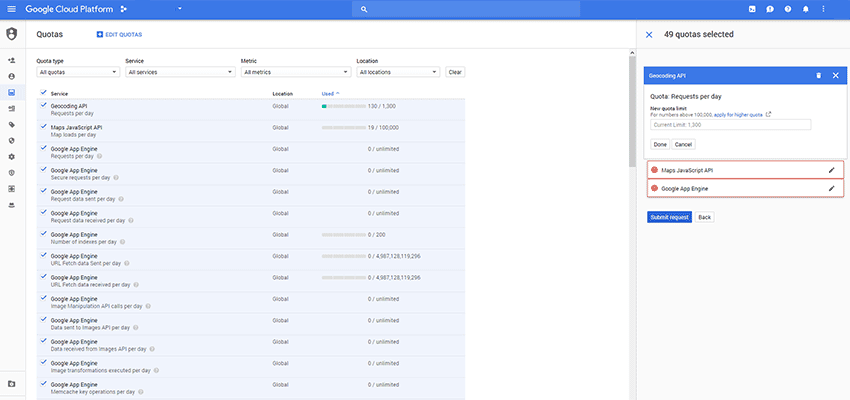Traditionally, summer has been a somewhat slow time – at least for this grumpy designer. Sure, there are projects to work on. But it seems like the big maintenance issues take a break along with everyone else on holiday. Well, not this year.
You see, the world is a very complicated place. We web designers were never completely immune to its problems, but suddenly it feels like we’re thrown in the middle of it all.
Between the expected launch of the WordPress Gutenberg editor, GDPR (EU General Data Protection Regulation) taking effect and now Google’s announcement that, oh yeah, you’re going to have to pay for using their Maps API, web professionals are going to sweat a bit more in the summer heat. The sense of impending doom swirls like a fly that’s landed in our fancy umbrella drink.
It almost makes you cringe to think about what the next unpleasant reality will be. Mandatory summer school? Hosting blackouts? A return of IE6? I shudder at the mere thought.
But, like all challenges that are in our way, we have the ability to thrive (or at least survive). So, before it’s too late, let’s dig into your official survival guide to this summer of headaches.
Accept the New Reality
Yes, denial is usually the first step in recovery – but we’re talking survival here. The fact is that our jobs are starting to entail more responsibility. This is especially so for freelancers who don’t have a dedicated team to help with all of the real messes created by these virtual entities. It is our new reality, whether we like it or not.
Things are only going to get more complex from here. The best way to tackle this challenge is to put processes in place that:
- Inform affected clients of impending changes
- Proactively prevent problems before they occur
- Put security at the forefront
Of course, we can’t always predict outcomes. But we can prepare ourselves by learning as much as we can about these issues and taking proactive steps to put our projects in the best possible position to adjust as needed.
So, while dealing with many of these issues can be a pain, we’re better off adjusting our workflows to account for them. If that doesn’t work, then it may be worthwhile to simply hide under a beach towel until said issues pass us by.

Say Goodbye to the Days of Free APIs (From Google, at Least)
To some developers, hearing that Google was going to start charging everyone for API access (even with their “free” $200 per month credit) was a bit like getting hit in the back with a lawn dart. In other words, it was a shock that this seemingly-benevolent company was putting longtime users behind the proverbial 8-ball.
There’s no doubt that Google, like any other company on the planet, is all about making money. That’s their right. But the timing of this change couldn’t have been worse, what with the other aforementioned major changes the web is facing. The fact that they are giving developers just over a month to scramble to get their accounts straightened out brings to mind the chaos of a bunch of kids chasing after an ice cream truck. Sorry kids, no more free samples.
In many respects, we all should have seen this coming. Google has been tightening up other tools like Analytics in recent years – it was only a matter of time before the APIs followed suit.
Beyond the actual “we’re going to charge you” fiasco, even worse is the horribly confusing UI Google has implemented in their developer dashboard. Finding the right page in the incredibly dense hierarchy is akin to winning one of those rigged carnival games.

And, while they let you set quotas to limit API usage for a project (ostensibly to avoid unwanted charges on the billing account they now force you to create), the interface is confusing to us mere mortals. There are no less than 49(!?!) different items listed and, get this, you can only set daily quotas. Yet they are charging us by monthly API access. We’re going to need a mathematician and an archaeologist to get through this thing.
Rants aside, it’s wise to assume that there is going to be a cost to add these types of features to a website. And it’s on us to advise clients that the use of anything from Google could incur a cost at any time.
Take it One Challenge at a Time
When taken together, it sure seems like a lot of issues for designers to deal with. And there’s no doubt that things have the potential to be very hectic with these large changes happening all in short order.
Gutenberg, for its part, is sort of an unknown quantity in that we don’t know the exact day it will ship. We’re simply told that it will be released as part of WordPress 5.0 when it’s ready. The best we can do is prepare sites and hold back on using the new editor if it isn’t 100% compatible. And, since it’s pre-release version is available as a plugin, we can at least do some testing while we wait for the editor to be merged into WordPress core.
On the other hand, we know that GDPR hits on May 25 and that Google Maps APIs will start requiring both a valid key and billing information to continue working beginning on June 11. It doesn’t give us much time, but at least we know the do-or-die dates.
These issues all affect us differently, depending largely on what’s in our maintenance portfolio. But if you’re in that unlucky crowd where all three impact your workflow for the summer and beyond, don’t let yourself feel overwhelmed.
Instead, prepare for the extra work that may come your way and expect that there will be complications. Then, knock things off of your to-do list one challenge at a time.
Who knows, if you find a way to handle everything in an efficient enough manner, you might even be able to take that vacation after all.
Related Topics
Top